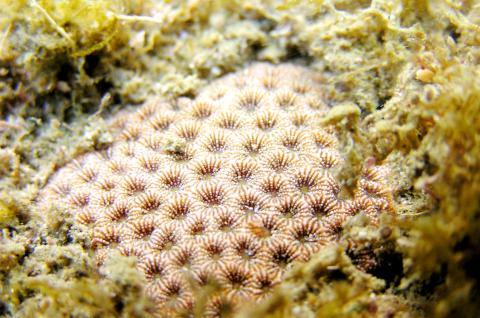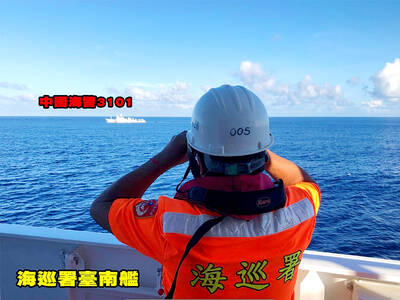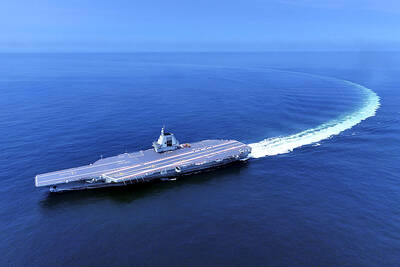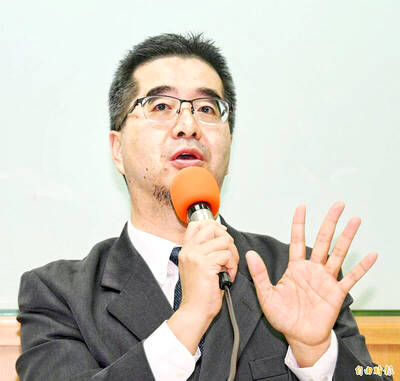Two new species of shallow-water coral have been discovered just off the coast of Taiwan, but their natural habitat is being threatened by construction projects in the area, environmentalists said yesterday, urging the government to put greater emphasis on ocean conservation.
Chen Chao-lun (陳昭倫), an associate researcher with the Biodiversity Research Center at Academia Sinica, yesterday told a press conference that after more than 20 years of research on corals in Taiwan, Academia Sinica’s research lab has confirmed the recent discovery of two new endemic species of coral — Pseudosiderastrea formosa and Polycyanthus chiashanensis.
The discoveries were made during a cross-national collaboration research project involving researchers from Taiwan, Japan, Australia, Kenya and Brazil. News of the discoveries was published in the academic journal Zoological Studies in January and last month.

Photo: Liu Chiu-jen, Taipei Times
Chen said the significance of the discoveries is that from the perspective of biogeography, Taiwan is located on the northern rim of the Pacific Ocean’s coral triangle. Despite this, nearly 300 species of coral have been found in the area, so the two new species underlines that there is great biodiversity in waters near Taiwan.
From the perspective of species evolution, Pseudosiderastrea formosa is only the second species of Pseudosiderastrea coral identified and 77 years had passed since the first species, Pseudosiderastrea tayamai, was found in 1935 in waters between Australia and Papua New Guinea, he added.
From the perspective of marine species conservation and environmental protection, Chen said: “The two species of coral have not been described in other parts of the world.”
“Both of them are small in size and inhabit shallow waters that are less than 10m deep, mostly water only about 1m to 3m deep, but because their habitat is very close to areas where there are human activity, they are very easily affected by human behaviors,” he said.
The Polycyanthus chiashanensis was first found in shallow waters near Greater Kaohsiung’s Takao Hill (also named Chiashan, 柴山) in 2010, at just about the same time the local government had began drilling the reef coast at Siz-ihwan (西子灣) to erect border dikes in a sea reclamation construction project, said Lan Pei-rong (藍培榮), a former chairperson of the Takao Hill Association.
“There are also many illegal constructions near the western coast of Takao Hill and these commercial activities will affect the habitat of the corals,” he said.
The association urged the government to apply to the International Union for Conservation of Nature and Natural Resources to list the two new species of coral as endangered. This would allow them to receive better protection.
Meanwhile, the Taiwan Environmental Information Center said it is particularly concerned about construction plans in the coastal regions of Taitung County, the location of some of the nation’s major coral reefs.
The Environmental Impact Assessment review should add the underwater ecological environment to its list of evaluation items, the center suggested.

The Coast Guard Administration (CGA) yesterday said it had deployed patrol vessels to expel a China Coast Guard ship and a Chinese fishing boat near Pratas Island (Dongsha Island, 東沙群島) in the South China Sea. The China Coast Guard vessel was 28 nautical miles (52km) northeast of Pratas at 6:15am on Thursday, approaching the island’s restricted waters, which extend 24 nautical miles from its shoreline, the CGA’s Dongsha-Nansha Branch said in a statement. The Tainan, a 2,000-tonne cutter, was deployed by the CGA to shadow the Chinese ship, which left the area at 2:39pm on Friday, the statement said. At 6:31pm on Friday,

The Chinese People’s Liberation Army Navy’s (PLAN) third aircraft carrier, the Fujian, would pose a steep challenge to Taiwan’s ability to defend itself against a full-scale invasion, a defense expert said yesterday. Institute of National Defense and Security Research analyst Chieh Chung (揭仲) made the comment hours after the PLAN confirmed the carrier recently passed through the Taiwan Strait to conduct “scientific research tests and training missions” in the South China Sea. China has two carriers in operation — the Liaoning and the Shandong — with the Fujian undergoing sea trials. Although the PLAN needs time to train the Fujian’s air wing and

Taiwanese celebrities Hank Chen (陳漢典) and Lulu Huang (黃路梓茵) announced yesterday that they are planning to marry. Huang announced and posted photos of their engagement to her social media pages yesterday morning, joking that the pair were not just doing marketing for a new show, but “really getting married.” “We’ve decided to spend all of our future happy and hilarious moments together,” she wrote. The announcement, which was later confirmed by the talent agency they share, appeared to come as a surprise even to those around them, with veteran TV host Jacky Wu (吳宗憲) saying he was “totally taken aback” by the news. Huang,

The American Institute in Taiwan (AIT) put Taiwan in danger, Ma Ying-jeou Foundation director Hsiao Hsu-tsen (蕭旭岑) said yesterday, hours after the de facto US embassy said that Beijing had misinterpreted World War II-era documents to isolate Taiwan. The AIT’s comments harmed the Republic of China’s (ROC) national interests and contradicted a part of the “six assurances” stipulating that the US would not change its official position on Taiwan’s sovereignty, Hsiao said. The “six assurances,” which were given by then-US president Ronald Reagan to Taiwan in 1982, say that Washington would not set a date for ending arm sales to Taiwan, consult